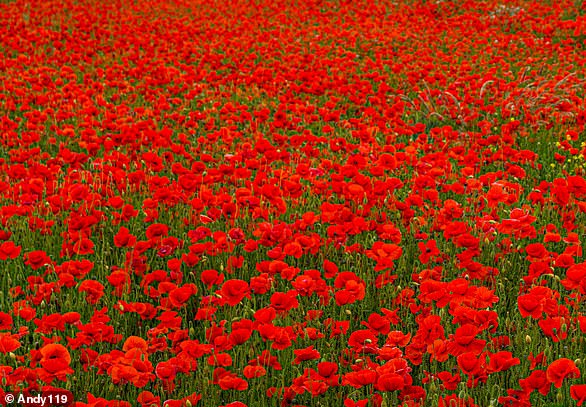Remembrance poppies go plastic free: Royal British Legion launches new recyclable paper design – marking the first change in 28 years
>
- The new poppy is made from a blend of “responsibly sourced renewable fibres.”
- It is in line with the recent government ban on single-use plastics in England
It is an iconic symbol of respect for our fallen soldiers, and a poignant reminder of the futility of war.
Now, the commemorative poppy has undergone its first design change in more than a quarter of a century.
In line with the government’s ban on single-use plastics, a new 100% paper version of the taxidermist will officially go on sale today.
The Royal British Legion, which has been making poppies since 1922, said the new version is made from “responsibly sourced renewable fibres”, including coffee cups.
Unlike the old poppy, which has a green plastic stem and a black centre, the new version can be recycled into home collections.
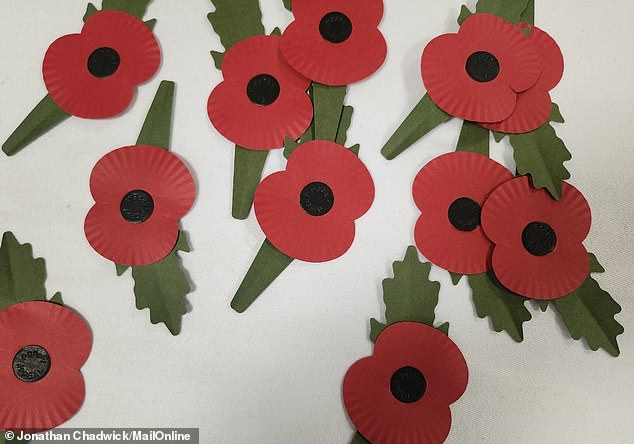
The Royal British Legion has been developing plastic-free poppies over the past three years as part of its efforts to become more sustainable
However, the charity is still selling the old design as a replacement until the remaining stock is sold, to stop anything that has already been produced being wasted.
By 2025, it hopes all poppies sold will be plastic-free.
The new recyclable poppy has the same traditional shape, with a black center engraved with the words “Poppy Attraction,” but the green stem and black center are no longer plastic.
Just as with the old version, wearers will be able to buttonhole it or attach it to shirts with a pin – although only time will tell if it will remain effectively attached to clothing.
This marks the first redesign of the commemorative poppy since 1995, when the poppy was first made available with its leaves.
The Royal British Legion said it has been developing plastic-free poppies for the past three years as part of its efforts to become more sustainable and reduce the use of single-use plastic.
An evaluation by scientists at University College London found that the redesign would reduce carbon emissions by 40 percent, compared to the paper and plastic version.
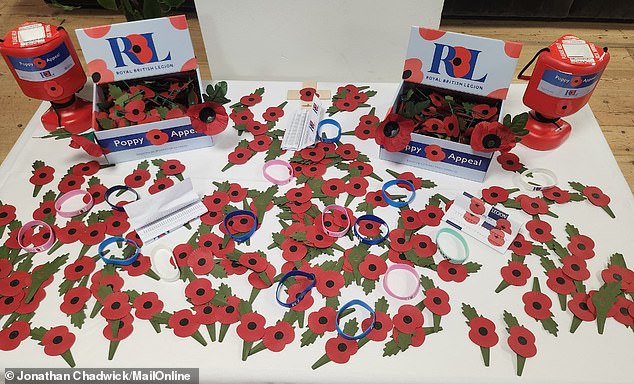
The British public will be able to buy the plastic-free version from thousands of volunteers across the UK or from major supermarkets from Thursday.
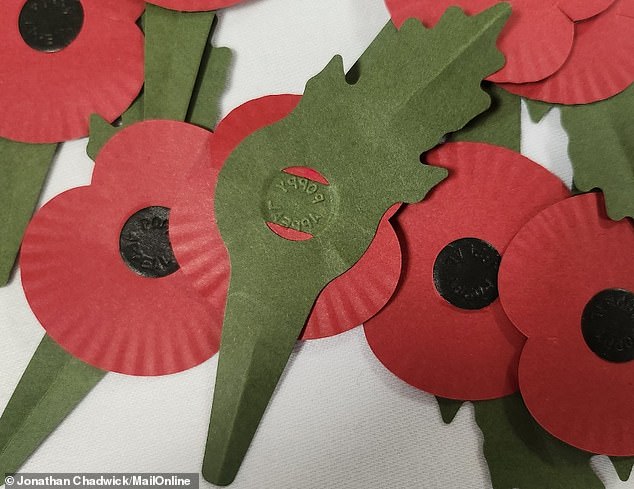
The new poppy has a black center inscribed with the words “Poppy Attraction.” Pictured is the back of the new design
Andy Taylor-White, campaign director, said: “We are very proud that this year we also have a new plastic-free poppy, so the public can wear this poignant symbol of remembrance with less impact on the environment.”
“We have been able to create a poppy that is a lasting symbol of respect and remembrance, as well as being friendlier to the planet.
“We would encourage everyone to get poppies this year when they become available.”
The Royal British Legion worked alongside designers Matter and custom paper supplier James Cropper on the new design, which is produced from a blend of responsibly sourced renewable fibres.
The charity said 50% of the paper comes from waste created during the production of paper coffee cups.
170,000 poppies are produced daily to meet demand ahead of Remembrance Sunday, which this year falls on November 12.
It is the latest in a series of designs since the symbol was first used to raise money in 1921 after World War I.
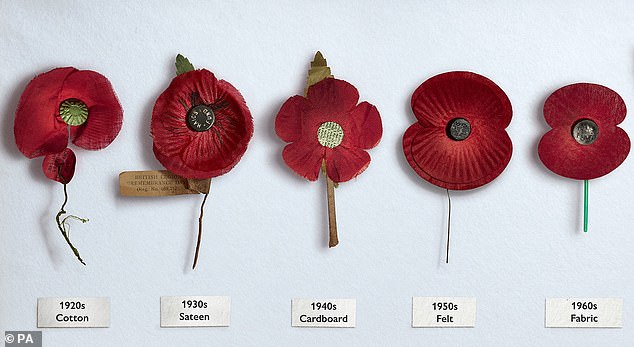
The souvenir poppy evolved, which was made from cotton, felt, and even cardboard
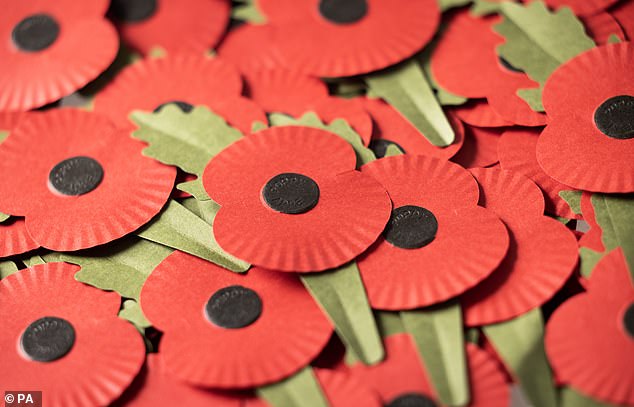
First makeover of the iconic poppy in 28 years, tests show will cut carbon emissions by 40 per cent
There have been more than 10 versions of Poppy over the years.
These include those made of handmade red silk with wire stems in the 1920s and wartime cardboard “austerity poppies” of the 1940s.
Artificial poppies were first sold in Britain in 1921 to raise money for the Earl Haig Fund to support former soldiers and the families of those who have died.
The following year, the British Legion set up a factory staffed by disabled former soldiers to produce its own – a tradition that continues to this day.
(Tags for translation) Daily Mail

